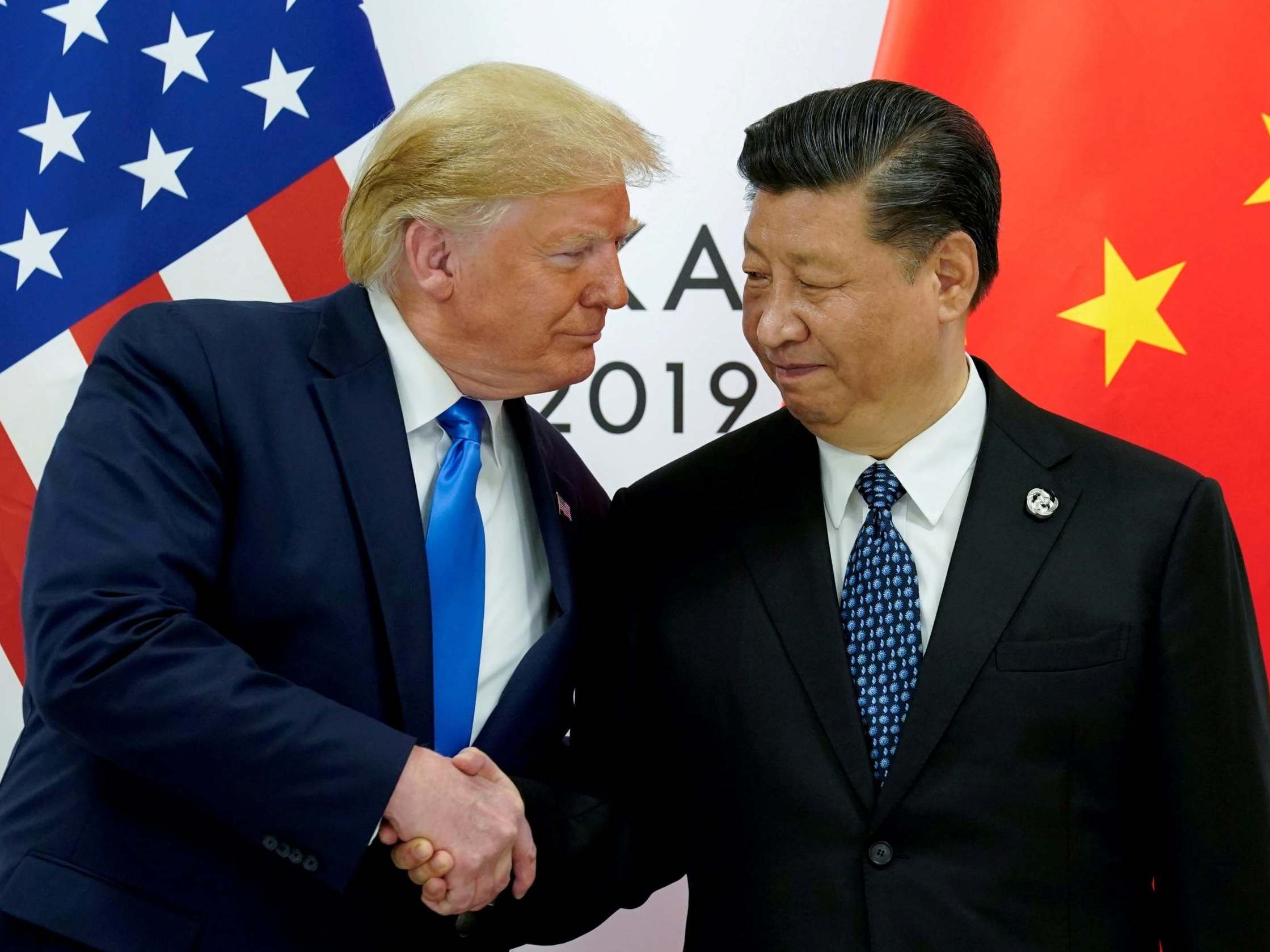The US-China trade war is a glimpse into the future of globalisation
What is likely to happen next is not just a cooling off of this relationship but a general simplification of trading patterns. The products we buy will doubtless be more sophisticated, but the way they are made will become simpler

Suddenly the markets seem to have decided that there will be a truce in the trade war with China. Or, at least, that is the most plausible interpretation of the mood of the past few days. Reason says there should be some sort of deal soon because it is powerfully in the economic self-interest of both countries to have one. But reason does not always dictate outcomes, as we all know.
Some new calculations by Goldman Sachs suggest that while both the US and China have been damaged, China has been hit slightly harder by the trade dispute. As far as the US is concerned, the bank calculates that the hit is equivalent to a half-a-percentage point rise in interest rates and that there has been a loss in activity of about 0.4 per cent. In the case of China the loss is nearer 0.6 per cent.
But, as with all such calculations, you never know the counter-factual – in this case what would have happened had there been continuing trade calm. My guess is that US interest rates would have to be quite a bit higher as signs of the economy overheating would have been stronger.
What is incontrovertible is that some US industries, notably farming, have been seriously damaged while others barely affected at all. The latest suggestion from the US side, that to unblock a deal China should resume buying some $20bn of US farm products, is an indication that farmers’ pain is pushing US negotiators. Whether this results in anything significant in the coming days is anyone’s guess.
The problem from the US point of view is that the increasing authoritarianism of Xi Jinping is making China a harder partner to negotiate with. And from the Chinese perspective, Donald Trump is not behaving like the businessman they thought he was, prepared to offer some concessions in order to achieve what he really wanted, which was better access to the Chinese market for American goods. Instead he appears irrational, lashing out in all directions, not quite sure of what he really wants.
So what will happen? In the short term, the markets are probably right: there will be some sort of easing off the tension, some sort of agreement. Trump cannot go into an election next year with farmers going bust as a result of his trade policy. Xi does not have to worry about elections – but he needs to keep growth going to quell internal dissent.
Longer term, what is happening between the US and China is part of a wider pushback against globalisation. This began before either leader took office, for the international goods trade had plateaued as a share of global output around 2014-15. In other words, trade in goods started to rise less swiftly than the growth of the world economy. We are too close to know quite why this should have happened, but I don’t think it was political because international trade in services continued to rise.
Rather it was more likely the result of a whole batch of other factors. These include rising labour costs in China and much of the emerging world, which made it less advantageous to manufacture in cheap labour countries. They also include the difficulty of managing global supply chains, where for a small advantage in cost you become prey to interruptions in supply and sometimes questions about quality. The fashionable idea of “offshoring” – making stuff on the other side of the world – had been replaced by “onshoring” – bringing production back – long before Donald Trump tried to run for president.
There is a good, if alarming, sign of the dangers of offshoring in the pharmaceutical trade at the moment, with the worldwide shortages of some generic drugs. Cost pressures have led to there being only two or three manufacturers of some drugs, all in emerging countries. When one factory, for whatever reason, has a production or quality problem, there is not enough spare capacity elsewhere to replace it. There are several reasons for this, but I think the overriding one has been the quest for cheapness over security of supply.
So while the drive for resetting the US-China trade relationship is mainly political rather than economic, it reinforces a movement that had already started to gather momentum: making locally rather than globally.
What is likely to happen next is not just a cooling of the trade relationship between the US and China (or indeed between Europe and the US) but a general effort to simplify our overcomplicated trading patterns. Of course the products we buy will doubtless continue to get more sophisticated, but the way they are made will become simpler.
Meanwhile, let’s hope for a trade truce. The farmers of America certainly need one.
Join our commenting forum
Join thought-provoking conversations, follow other Independent readers and see their replies
Comments